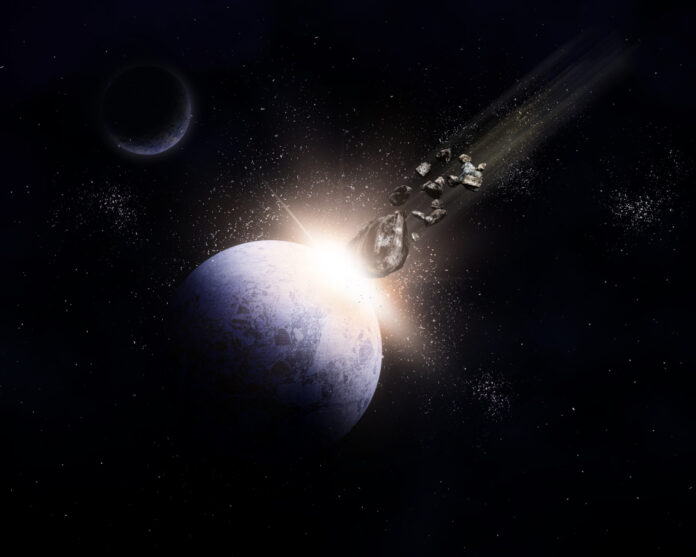Two asteroids, one colossal and another smaller but closer are set to pass Earth this week without impact concerns
This week, Earth is set for a celestial close encounter as two significant asteroids traverse our cosmic neighbourhood. Leading the charge is asteroid (415029) 2011 UL21, dubbed a ‘planet killer’ due to its colossal size comparable to Mount Everest’s width. Measuring a staggering 2,310 meters wide, this mammoth space rock ranks among the largest near-Earth objects (NEOs), though significantly smaller than the infamous Chicxulub asteroid believed to have triggered the dinosaur extinction event. Unlike most NEOs, (415029) 2011 UL21 orbits at a steep angle relative to the plane of our solar system, possibly influenced by Jupiter’s gravitational pulls, which occasionally perturb asteroids towards Earth.
Despite its size and classification, (415029) 2011 UL21 poses no threat during its passing this Thursday, maintaining a safe distance of approximately four million miles from Earth. Meanwhile, a more recent discovery, asteroid 2024 MK, identified on June 16, will come much closer, passing within 180,200 miles—about 75% of the distance to the Moon—on Saturday. Although significantly smaller at 120 to 260 meters wide, 2024 MK’s proximity underscores the potential for damage should such objects impact Earth.
Embed from Getty ImagesDr. Greg Brown from the Royal Greenwich Observatory reassures that while these asteroids are larger than typical close passers, neither poses an immediate threat. He emphasizes the routine nature of such close approaches for smaller asteroids, occurring dozens of times monthly. Despite its recent discovery, 2024 MK’s size surpasses that of the Tunguska event asteroid, which devastated a large Siberian area in 1908. This event highlights the localized but significant impact even smaller asteroids can have.
The incidents reinforce the critical need for advanced detection systems and monitoring of NEOs. Astronomers worldwide continually scan the skies for potentially hazardous objects, with NASA’s upcoming Near-Earth Object Surveyor mission in 2028 expected to enhance detection capabilities significantly. These efforts aim to mitigate risks associated with asteroid impacts, underscoring the importance of continued investment in planetary defense technologies.
For now, as the two asteroids pass harmlessly by, they serve as a reminder of Earth’s vulnerability and the ongoing vigilance required to safeguard against future cosmic threats.
Analysis:
Political Perspective: The occurrence of close asteroid encounters often prompts discussions on international cooperation in planetary defence and the allocation of resources to monitor and mitigate asteroid threats. Policies addressing planetary defence strategies may become more prominent as public awareness of NEO risks grows.
Social Perspective: Public interest in asteroids and space exploration is sparked by close encounters like these, raising awareness about the potential impacts of cosmic events on Earth. Such events foster discussions on disaster preparedness and scientific advancements in detection and mitigation.
Racial Perspective: The impact of asteroids is universal, transcending racial boundaries, highlighting humanity’s shared vulnerability to cosmic events and the need for collaborative efforts in planetary defence.
Economic Perspective: The potential economic impacts of asteroid impacts on infrastructure and regional economies underscore the importance of proactive measures in planetary defence. Investments in technology and research aimed at enhancing NEO detection and deflection capabilities are critical for minimizing future economic disruptions.
